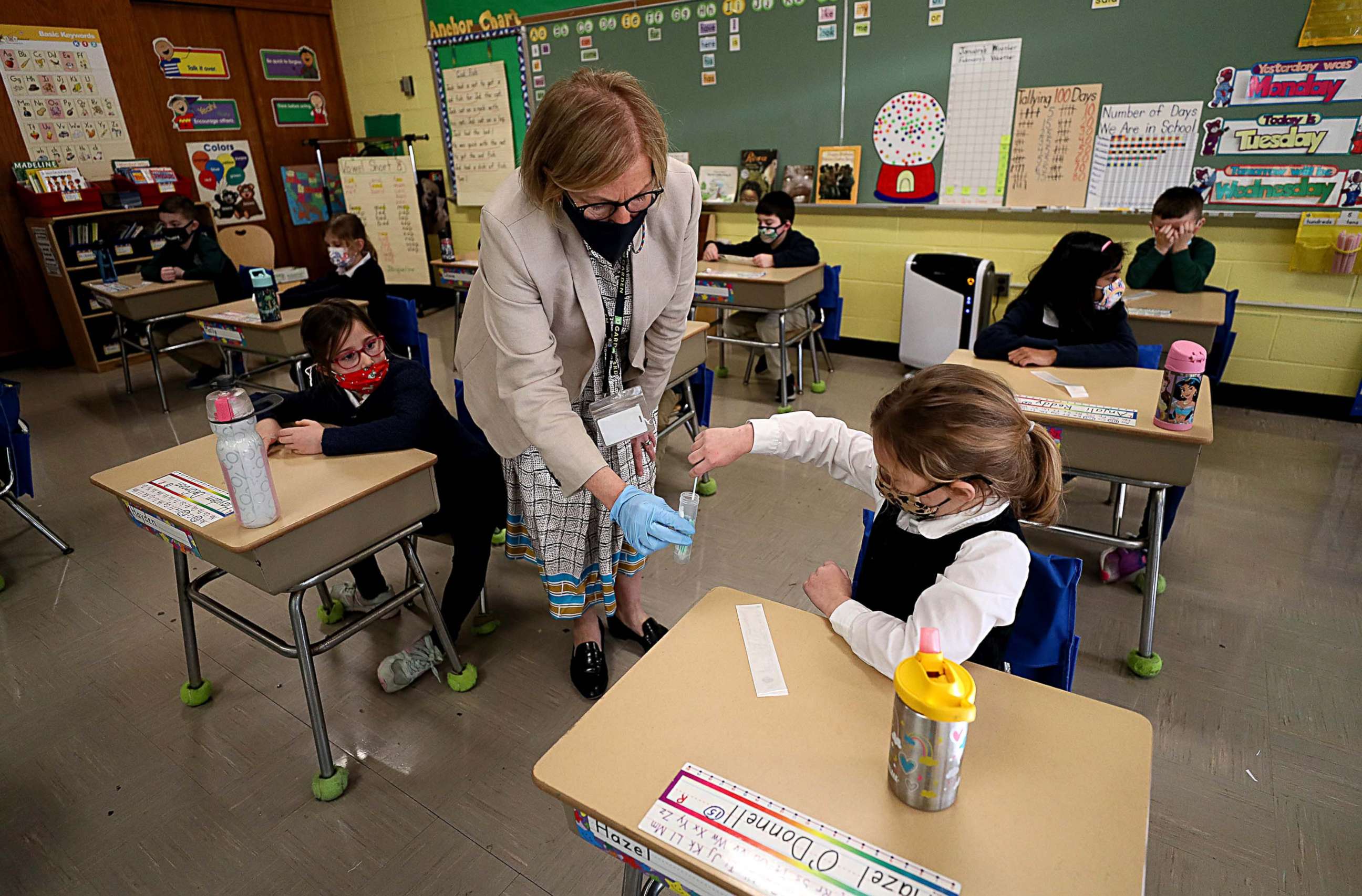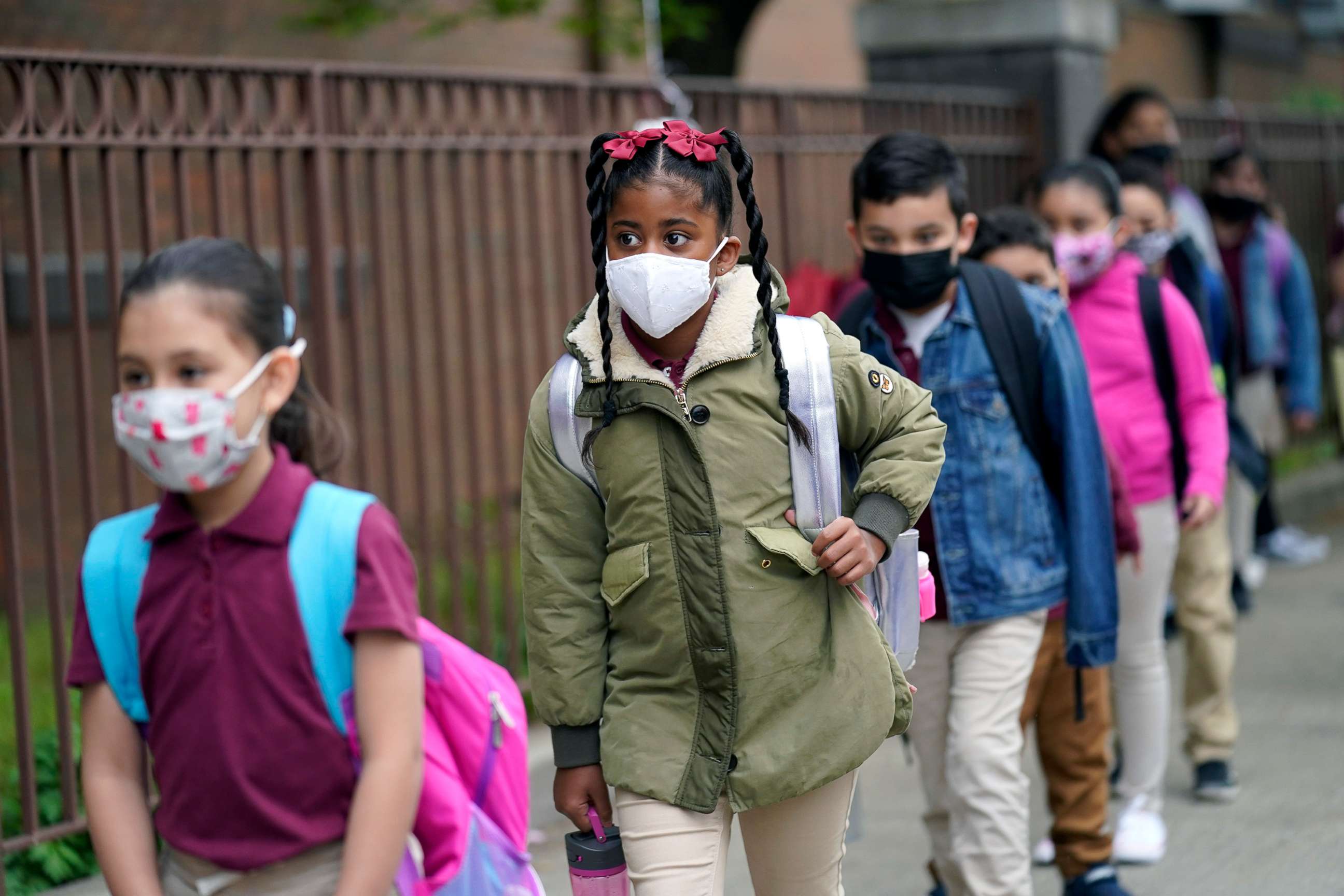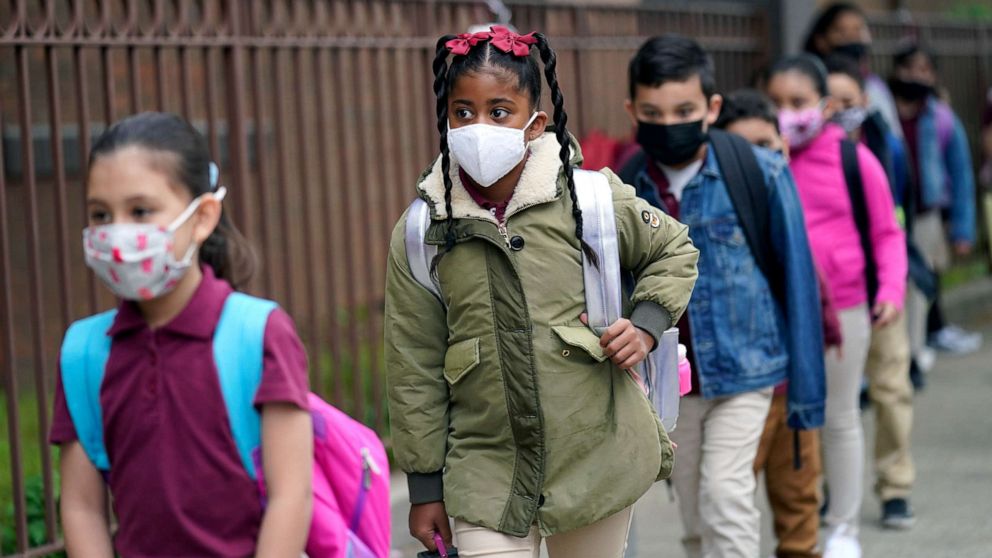CDC puts out new guidance on masks in schools
Students who are vaccinated don’t have to wear masks in school this fall unless they are riding the school bus or their school decides otherwise, according to new guidance released Friday by the Centers for Disease Control and Prevention.
The new federal guidelines aren’t mandatory but are expected to influence school officials, local health departments and governors who are in the midst of preparing for students to return to the classroom full time this fall.
The recommendation also could encourage parents who were previously undecided. Kids older than 12 qualify for the Pfizer vaccine, which requires two doses three weeks apart.
"Achieving high levels of COVID-19 vaccination among eligible students as well as teachers, staff, and household members is one of the most critical strategies to help schools safely resume full operations," the CDC stated.
The CDC recommendations specifically call for unvaccinated students and staff to continue mask-wearing and encourages schools to offer voluntary routine testing at least once a week. It also encourages 3-feet of distancing among unvaccinated kids in the classroom but says that recommendation shouldn’t prevent classrooms from reopening.

The CDC also recommends that all bus drivers and their passengers -- vaccinated or not -- wear a mask while traveling to school.
The biggest sticking point for schools though will likely be whether to require proof of vaccination. Most schools already require proof of childhood immunizations with few exceptions.
The CDC, which does not set vaccination requirements for schools or child care centers, makes clear in its recommendations that it will be up to schools and local officials to decide what to do. The agency specifically notes that schools may opt for a universal masking policy, particularly if they have unvaccinated populations and don't want to require verification that a person has been vaccinated.
"We do allow for flexibility in our guidance," said Capt. Erin Sauber-Schatz, who helped to write the guidelines as a member of CDC’s COVID response team.
In the end, "this is really about protecting the people who are either not yet eligible for vaccine due to their age, or people who are not yet fully vaccinated," she added.
The Biden administration has said it won’t pursue a federal mandate for vaccines and is leaving it up to schools and businesses to decide what to enforce. But it has called for universal mask-wearing, even among vaccinated people, on airplanes, trains, buses and other public transportation because of the risk of variants spreading through travel.
So far, many businesses have been reluctant to mandate the vaccines or ask for proof, creating a kind of honor system. Health experts say that could change in a few months if federal regulators grant full approval to the vaccines, which are currently distributed under emergency authorization.
It's likely that many schools will set their own policies anyway, even ignoring CDC guidance.
In Arizona, Chandler Unified School District, which welcomes back students July 21 -- one of the earliest start dates in the nation -- had already decided masks would be voluntary when Republican Gov. Doug Ducey signed a law that prohibits local counties and school districts from requiring students or staff to wear face coverings.

Sauber-Schatz said the CDC’s goal was to write useable guidance for all schools, even jurisdictions that were planning to forgo mask mandates.
Under the recommendations, the CDC advises schools to lift COVID protocols slowly -- including for masks -- if the community has low case numbers and high vaccination rates; on the contrary, areas with high cases and low vaccination rates should keep various strategies in place to prevent outbreaks, according to the CDC.
Parents also should know a child isn’t "fully immunized" until two weeks after their second shot. Because the shots are spaced three weeks apart, that means a teen hoping to become fully immunized by mid-August would need their first shot now.
"The message is really, if your child is eligible for vaccine, the time to get vaccinated is now," Sauber-Schatz said.




